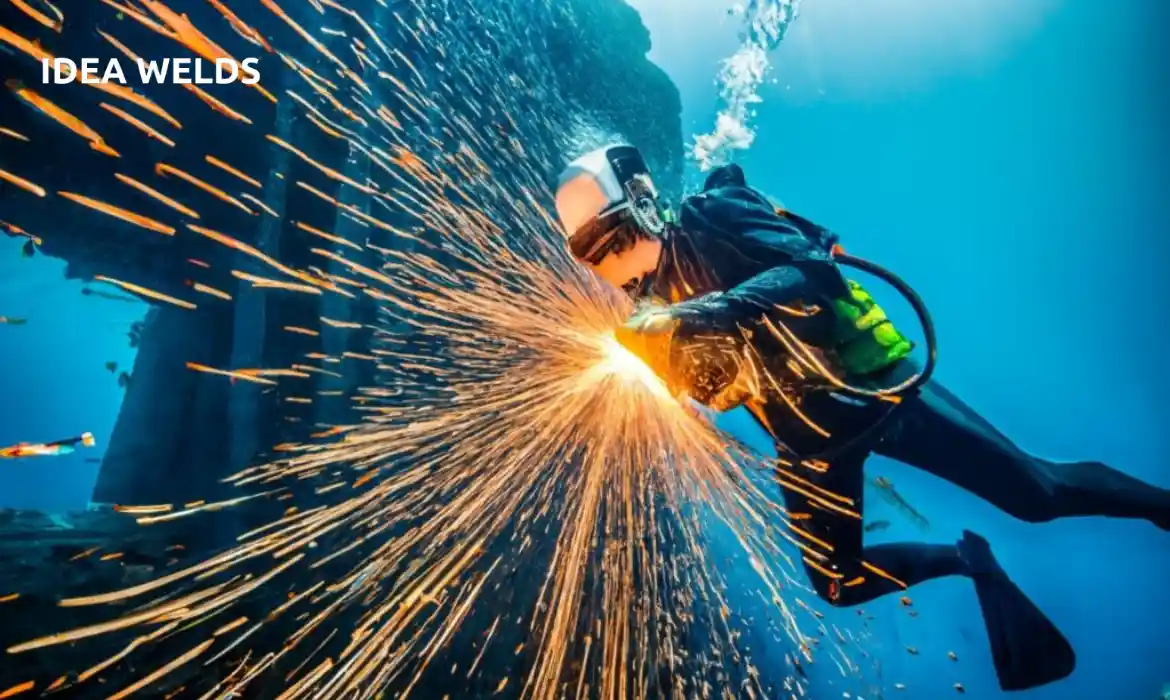Underwater welding is a specialized technique crucial for various industries such as offshore oil and gas, marine construction, and underwater infrastructure maintenance. This article explores the distinctive challenges of underwater welding, the technologies involved, safety considerations, and advancements shaping this demanding field.
Challenges of Underwater Welding
- Environment: Working underwater introduces environmental challenges such as limited visibility, cold temperatures, and varying currents. These factors complicate welder positioning, arc stability, and overall operational safety.
- Hydrostatic Pressure: Underwater welding occurs under significant hydrostatic pressure, which increases with depth. Welding at greater depths requires specialized equipment and techniques to manage pressure differentials and ensure weld integrity.
- Water Contamination: Water is a constant presence during underwater welding, introducing the risk of hydrogen embrittlement and contamination in the weld. Effective shielding and use of dry welding chambers or habitats mitigate these risks.
- Access and Mobility: Accessing submerged structures and maneuvering equipment underwater pose logistical challenges. Divers rely on tethering systems, diving bells, or remotely operated vehicles (ROVs) for mobility and safety during welding operations.
Technologies in Underwater Welding
- Dry Welding Chambers: Enclosed habitats or chambers provide a dry environment around the weld area, shielding it from water contamination. This method allows for controlled welding conditions similar to surface welding.
- Wet Welding: Conducted directly in the water using specialized electrodes designed to operate in wet conditions. Wet welding electrodes are formulated to withstand moisture and facilitate effective arc ignition and stability underwater.
- Hyperbaric Welding: Utilizes hyperbaric chambers to simulate surface conditions at depth, maintaining dry welding conditions while accommodating welders and equipment under high pressure.
- Remotely Operated Welding Systems: ROVs equipped with welding tools and cameras enable precise control and monitoring of underwater welding operations. ROVs are employed in complex or hazardous environments where diver intervention is impractical or unsafe.
Safety Considerations
- Diver Training and Certification: Underwater welders undergo rigorous training and certification to operate in challenging underwater environments safely. Training includes diving techniques, welding procedures, emergency response, and decompression protocols.
- Equipment Reliability: Dependable welding equipment, including specialized electrodes, welding machines, and diving gear, is essential for maintaining safety and achieving quality welds underwater.
- Risk Mitigation: Comprehensive risk assessments, pre-dive checks, and adherence to established safety protocols minimize hazards associated with underwater welding, such as decompression sickness and equipment failure.
Advancements and Future Trends
- Automation and Robotics: Continued development of autonomous underwater welding systems enhances efficiency, reduces human risk, and expands capabilities for complex underwater welding tasks.
- Material and Welding Technique Innovations: Research into new welding alloys and techniques improves weld quality, durability, and performance in underwater applications.
- Environmental Monitoring: Integration of sensors and real-time monitoring technologies enhances safety and operational efficiency by providing data on water conditions, weld quality, and diver health.
Conclusion
Underwater welding remains indispensable for maintaining and constructing critical infrastructure in marine environments worldwide. Despite its inherent challenges, advancements in technology, safety protocols, and material sciences continue to elevate the capabilities and reliability of underwater welding. By addressing environmental, safety, and operational concerns through innovative technologies and meticulous training, underwater welders and engineers ensure the integrity and longevity of underwater structures essential to global industries.

